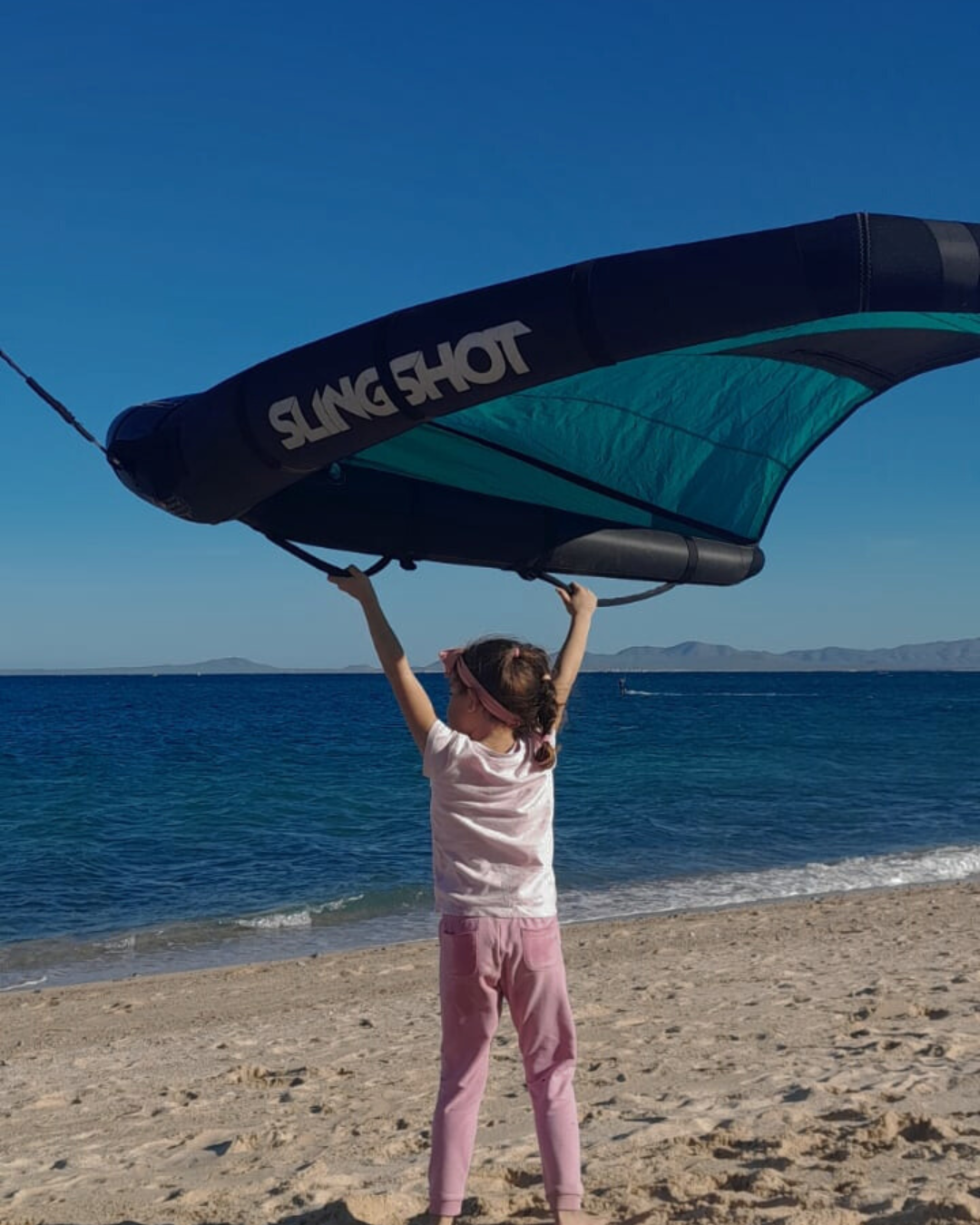La Ventana, a charming coastal town nestled along the Sea of Cortez in Baja California Sur, is a world-class destination for wind sports enthusiasts. With its consistent winds, warm waters, and breathtaking scenery, it’s the perfect place to learn and master wing foiling and kiteboarding. Whether you’re a total beginner or looking to refine your skills, La Ventana offers the ultimate playground for wind-powered adventures. And the best part? We’re here to guide you every step of the way with expert lessons, full-service support, and unforgettable experiences.
Why La Ventana?
La Ventana’s steady El Norte winds make it one of the top spots in the world for wind sports. From November through March, the conditions are ideal for wing foiling and kiteboarding, with wind speeds perfect for beginners and advanced riders alike. The bay’s wide-open spaces and calm launch areas create a safe and stress-free environment to practice and play. Plus, the crystal-clear waters and stunning desert landscapes add a touch of magic to every session.
What We Offer
We specialize in providing everything you need to have a seamless and exhilarating wind sports experience. Here’s how we make your journey unforgettable:
1. Professional Lessons
Our expert instructors are passionate about sharing their love for wing foiling and kiteboarding. Whether it’s your first time or you’re transitioning to advanced techniques, our personalized lessons ensure you’ll progress quickly and safely. With patient guidance and top-notch equipment, we’ll have you riding the wind in no time.
2. Launch and Land Support
We understand that the technical aspects of wind sports can be intimidating at first. That’s why we provide full launch and land support, ensuring your sessions are as smooth as the Sea of Cortez itself. Our team is always on hand to assist with setup, launching, and landing, giving you the confidence to focus on having fun.
3. Epic Downwinders
For those ready to take their skills to the next level, our downwinders are an absolute must. Imagine gliding effortlessly along the coastline, with the wind at your back and miles of unspoiled beauty stretching ahead. These guided adventures are designed to elevate your skills while showcasing the stunning surroundings of La Ventana.
4. Full-Service Convenience
From equipment rentals to on-site amenities, we’ve got you covered. Our full-service approach means you can focus on enjoying the experience while we handle the logistics. After a day on the water, unwind at our facilities or explore the vibrant local community. From delicious meals to cozy accommodations, La Ventana offers a perfect blend of adventure and relaxation.
Beyond the Water
La Ventana isn’t just about wind sports; it’s a destination brimming with charm and natural beauty. Spend your evenings savoring fresh seafood at local restaurants, soaking in stunning sunsets, or enjoying the laid-back vibe of this coastal paradise. For those seeking more adventure, activities like snorkeling, paddleboarding, and hiking are all within reach.
Ready to Ride?
Learning to wing foil or kiteboard in La Ventana isn’t just about mastering a new skill—it’s about discovering a new passion and embracing the thrill of the wind and sea. With our comprehensive lessons, dedicated support, and an unforgettable location, there’s no better place to start your wind sports journey.
So, what are you waiting for? Join us in La Ventana and experience the ride of your life. Adventure is calling, and the wind is waiting for you!













